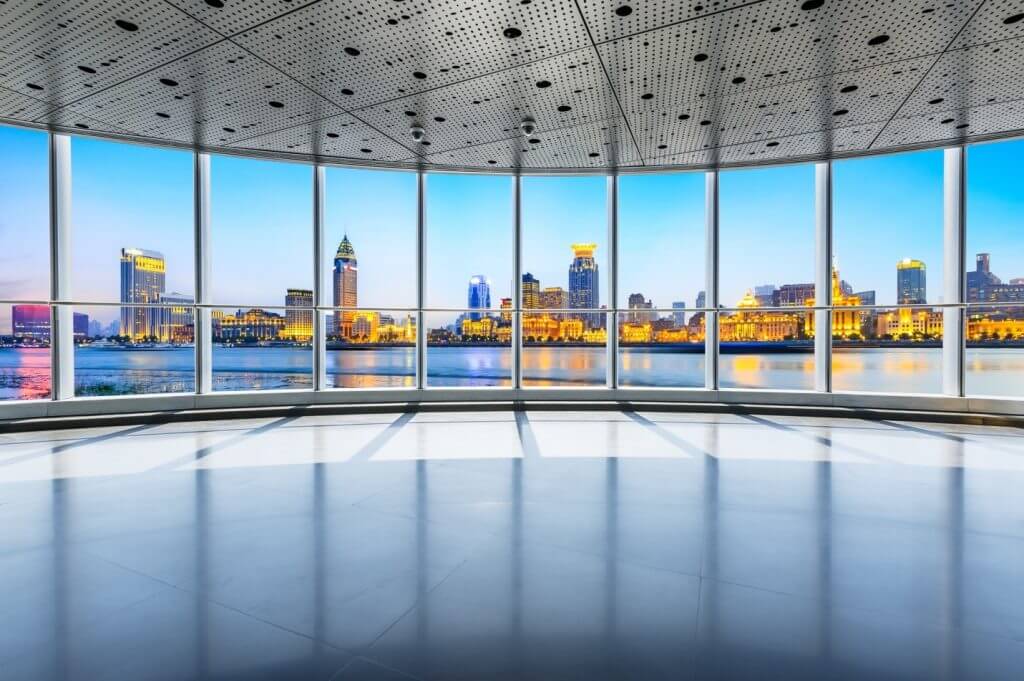Acrylic plastic is one of the world’s oldest synthetic materials available. If you aren’t familiar with the plastic, it’s a common material that is often referred to as Plexiglass. Popularly used in a variety of different applications across industries including point-of-purchase displays, windows, signage, picture frames, furniture, aquariums, DIY projects, and more—this synthetic polymer is a versatile material with distinct advantages.
Acrylic is
- Easy to Fabricate
- Easy to Shape
- Lighter than Glass
- Stronger than Glass
- Highly Transparent
- Easy to Clean
- Easy to Maintain
While acrylic certainly has a number of advantages, we’ve highlighted four of the main ones below:
Acrylic is Easy to Fabricate and Shape
When acrylic plastic is heated it becomes malleable and can be molded into many shapes. As it cools down, it holds its formed shape, allowing it to be machined, drilled, or sawed just like wood. When it is being shaped, molds made from wood or plastic can be used, which is very cost-effective for manufacturers. Because it is a thermoplastic and softens under high temperatures, acrylic can be formed into virtually any shape.

Acrylic is 50% Lighter than Glass, but Much Stronger
One of the greatest advantages of using acrylic plastic in place of glass is that while it’s more durable, it also weighs 50% less than glass. Whether fabricated in cast or extruded forms, acrylic is less expensive while remaining 10 times more impact-resistant than glass. Due to its incredible durability, acrylic can be used over a broad temperature range and has superior weather resistance compared to glass and other forms of plastic. Under high impact, it will not shatter and if it does break, it fractures into large, dull-edged pieces. This is an important safety feature for applications such as shower doors, plexiglass windows, sliding doors, and enclosures built for hockey rinks and ball fields.
[wbcr_snippet id=”468″]
Acrylic is Highly Transparent
Acrylic plastic remains transparent as it gets older without excessive yellow tinting. This is extremely important for applications that are exposed to sunlight. More fade-resistant than other plastics, acrylic plastic’s light transmittance is equal to glass while providing the same aesthetic appearance for a more reliable, long-term result. This makes it perfect for applications such as plexiglass windows, automotive screens, computers, eyeglasses, tanks and more.
Acrylic is Easy to Maintain
While there are some rules surrounding acrylic care and cleaning, it’s an easy material to maintain. When cleaning acrylic that has slight blemishes and dirt it is recommended to use a wet microfiber cloth and blot the material. Additionally, it’s important to ensure particles and grit are completely removed from your cleaning cloth, as accidentally rubbing rough dirt or unwanted particles can cause acrylic to further scratch. The gentler you are when cleaning acrylic, the better. Avoid using rough paper towels because they will not remove scratches and may accidentally cause them. Also avoid ammonia-based products like Windex or other home glass cleaners, because they contain harmful chemicals that will damage the surface leaving it looking cloudy. When cleaning and maintaining acrylic the easiest and safest measure is to use soapy water or Novus products. These products will keep your acrylic plastic-looking polished and new with minimal effort.
Need more information on acrylic? Contact our knowledgeable team today!

